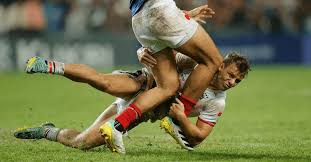On match day, rugby players are warriors crashing into tackles, sprinting into space, absorbing collisions that would leave most people wrecked for a week. But what happens when the final whistle blows? That’s where the real magic begins. Behind the scenes, recovery is as much a part of the game as the playbook and for professional rugby players, it’s almost an art form. Quiet, calculated, and surprisingly high-tech.
Most fans see the bruises, the blood, and the glory. What they don’t see is the ice baths at 6 a.m., the compression suits, the oxygen chambers, and the scientists tweaking every detail of a recovery protocol designed to rebuild bodies faster than nature ever intended.
One of the most closely guarded secrets in elite rugby circles? Cryotherapy. Imagine stepping into a chamber that hits minus-140°C, cold enough to numb pain and jolt the body into repair mode. It sounds extreme and it is but players swear by it for reducing inflammation and accelerating muscle recovery after brutal matches.
Then there’s sleep science not just getting rest, but optimizing it. Some teams now use wearable tech to monitor sleep quality down to the micro-movements. If a player’s REM cycle is off, the coaching staff knows. Custom sleep environments, blackout rooms, and even sleep coaches are becoming standard for top-tier clubs.
Nutrition protocols go deeper than protein shakes and chicken breasts. Post-match recovery meals are timed to the minute. Some players are handed pre-packed meals immediately after games engineered with exact carb-to-protein ratios and anti-inflammatory foods like tart cherry juice, turmeric, and collagen peptides.
But not everything is high-tech. One method that’s stayed consistent over decades? Hydrotherapy, especially contrast baths alternating hot and cold water immersion. The shift in temperatures increases circulation and flushes waste products from muscles. It’s simple, brutal, and still incredibly effective.
Lately, rugby teams have also embraced neurological recovery techniques like float tanks and guided breathing sessions to reset the nervous system. These are crucial after high-contact games, which stress not only the muscles but also the mind.
And perhaps the most underrated weapon in the recovery arsenal: the massage therapist. Not your average back rub these are deep-tissue specialists who understand every knot, strain, and hidden ache. Some players have the same therapist their entire career, building trust and routine like a quarterback does with a receiver.
The secret to staying on the field week after week isn’t just brute strength or good genetics. It’s discipline in the downtime. It’s the science-backed rituals, the quiet routines, the invisible hours spent repairing what the game breaks down.
Because in rugby, recovery isn’t rest. It’s work.

